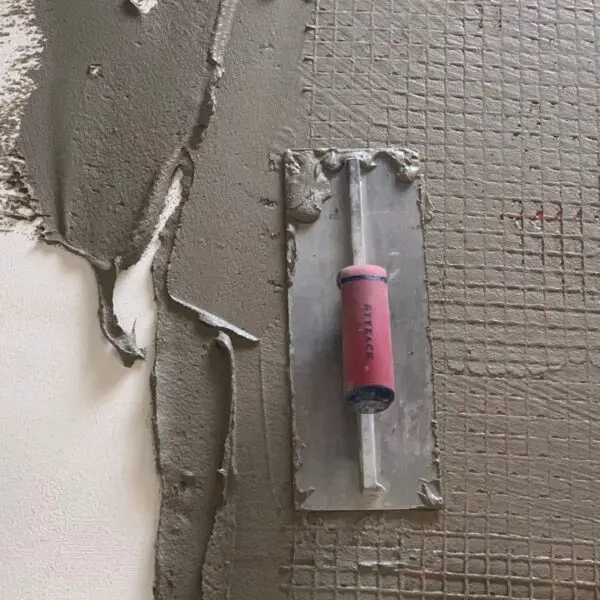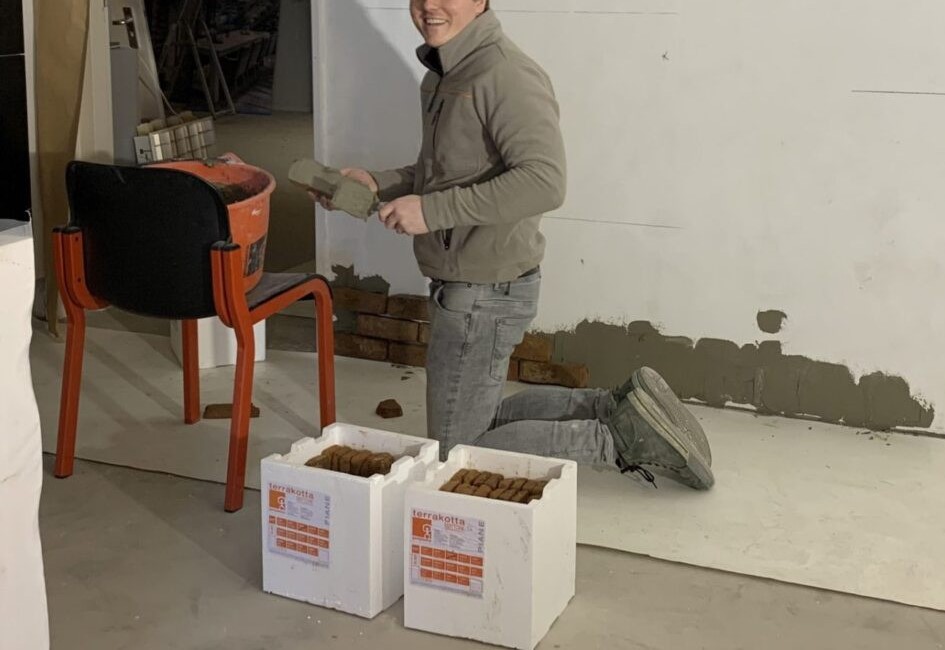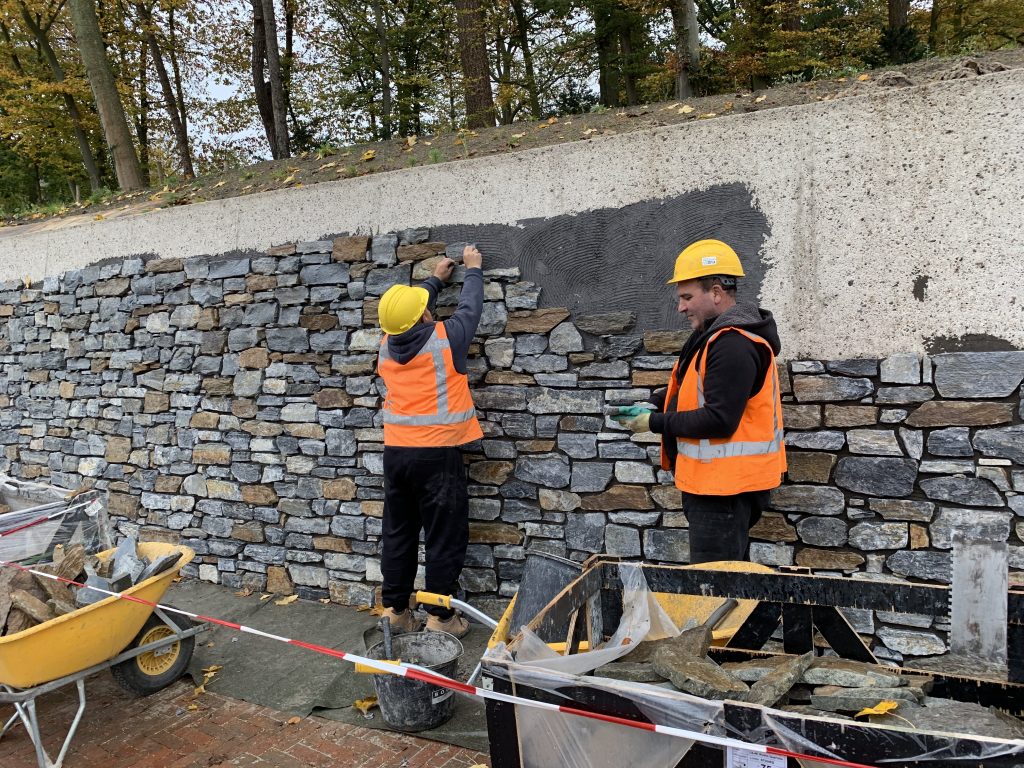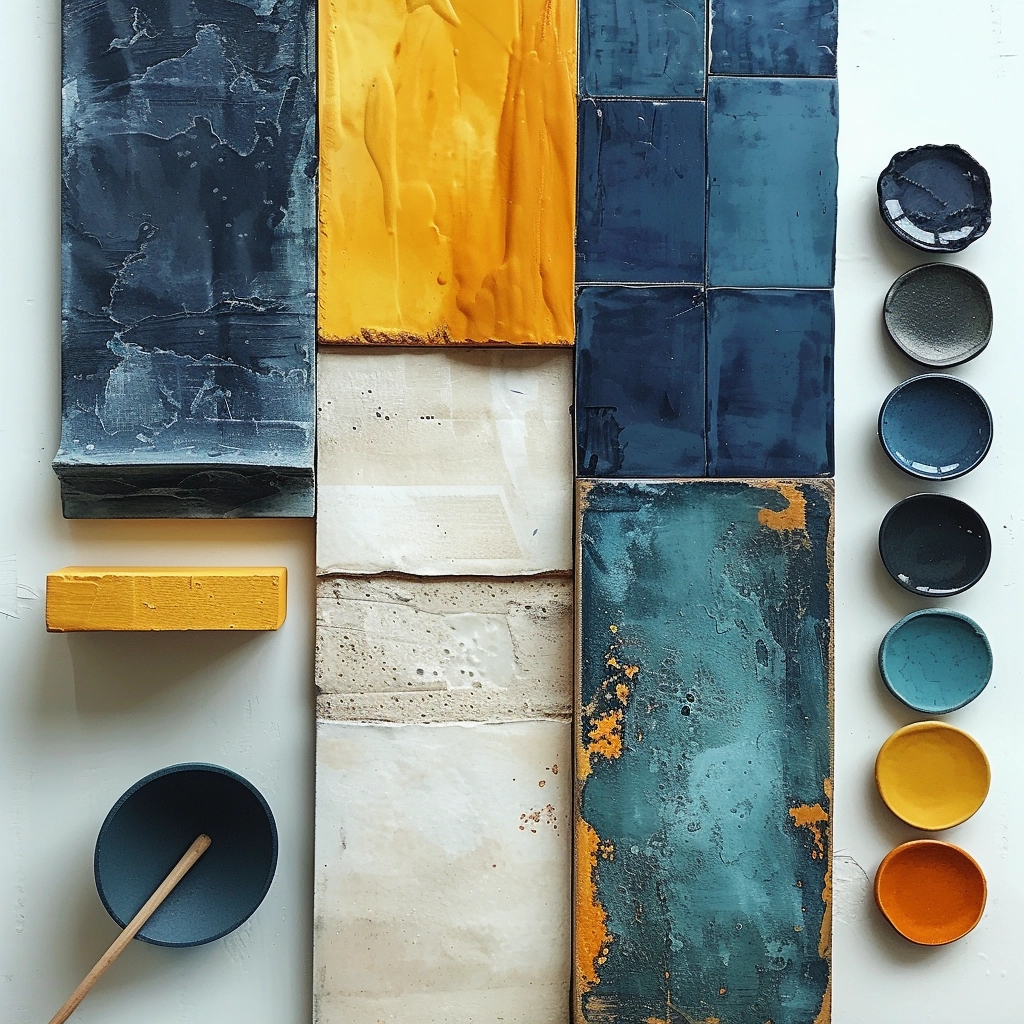Using Additives and Optical Fiber Mesh for Wall Reinforcement
In many cases, we typically recommend reinforcing the wall with optical fiber mesh. This fiberglass mesh is the ideal product for creating a new layer of robust cement. It’s a special large-mesh optical fiber net designed to reinforce unstable or weak substrates. This means that, thanks to this optical fiber network, you no longer run the risk of subway operation. However, it’s always crucial to start from an appropriate surface.
For dubious surfaces like painted or plastered surfaces or those made of sheets, we advise using a fiberglass mesh. It won’t take much time, but it will provide a lot of security. As seen in the example on the right, a support is first applied with a cement-based adhesive. Then, the optical fiber mesh is installed (orange mesh, approximately 1 cm x 1 cm). This is spaced 10 cm apart (the transition), much like hanging wallpaper with glue, but in the end, 10 cm above the previous mesh to the left or right. Next, drill holes in the wall with a drill and insert the plug. Then, screw the screws in place with the washer so that the optical fiber mesh is completely fixed in the wall behind it. The wall must be suitable and load-bearing (not wooden). Finish the fiberglass mesh with a layer of adhesive and let it dry for a day. You can then adhere the faux stones.

Start from the bottom, and for corners, always begin with the most challenging one. Check and fill visible lines with cement if needed. The recommended adhesive is Sika. Ensure that the adhesive on the front of the bricks is removed.
Discover flawless techniques to install faux stone wall , choose the best adhesive for faux stone, and perfect the art of grouting. Elevate your space with our expert guide


Adhesive Treatment for faux Stone Tiles
There are many adhesives on the market for faux stone. The product sika has undergone extensive testing and has a fast processing time, meeting specific requirements. Once you’ve worked with it, you generally won’t want to use any other adhesive.
The Best Adhesive for faux stone
This adhesive is specially optimized for a long processing time and can be used on any cementitious substrate, including external wall insulation systems (Adhesive for brick slips to EPS).
- Avoid applying too much glue at once.
- Adhere to the “Butter and Float” method for both the wall and the mortar.
- Place the stone firmly against the wall with a sliding motion.
- Glue the stone again to fix it to the wall.


How Much Adhesive for Faux Stone Panels?
Regarding the adhesive on the panel itself, apply a generous amount (preferably in a roof-shaped form of 2 to 4 cm) so that most of the adhesive is in the middle of the stone. Don’t be too economical. When pressing the faux stone panel, this leads to a balanced distribution. Use a trowel for applying mortar to the panels (not a trowel). It’s important that the adhesive on the panel has sufficient adhesion to the substrate. The substrate must also be load-bearing, cement-bound, suitable, and dust-free.




install stone wall Photo Album

ADVICE
Top advice from leading experts addressing your design dilemmas.
Why trust us?
At IHouse STONE, we are committed to delivering top-notch home inspiration and design education. IHOUSE STONE serves as your ultimate guide for purchasing premium products. Our devoted team conducts comprehensive research, reading reviews from reputable sources to ensure you receive thorough information. We rigorously test each product on reliable websites, offering trustworthy conclusions.










